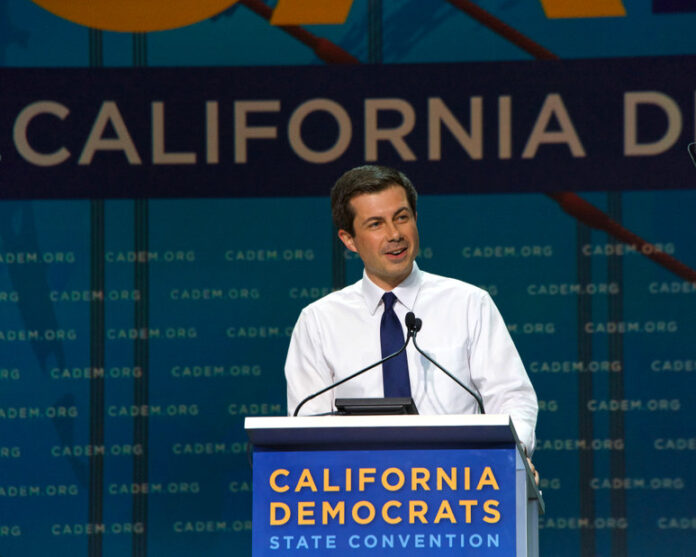Buttigieg outlined six principles that will inform his department’s support of transportation technology, but says nothing about C-Band tensions between the FAA and wireless carriers
U.S. Secretary of Transportation Secretary Pete Buttigieg popped into this year’s Consumer Electronics Show (CES), albeit virtually, to discuss the criticality of technology in the future of transportation, focusing specifically on the role that the government must take in order to facilitate growth and innovation, but also, keep the public safe.
“As policymakers, we have to prioritize,” Buttigieg said. “We need to assess which important innovations will develop on their own and which require federal support for basic research,” he continued. “We must consider when a technology should be given as much room as possible to develop on an experimental basis and when it’s reached the point when it raises concerns that require regulation to keep people safe.”
While it went unmentioned, his comments brought to mind the currently unfolding tension between Buttigieg and the Federal Aviation Administration (FAA) and AT&T and Verizon around the deployment of C-Band spectrum.
In December, AT&T and Verizon agreed to pause their C-Band plans until early January following warnings issued by the Federal Aviation Administration (FAA) that the 5G spectrum could interfere with aviation safety systems, particularly during low-altitude flight operations.
But when the FAA Chief Steve Dickson and Buttigieg asked the carrier’s to delay their C-Band roll out for an additional two weeks, the carriers first rejected the new request. In a joint letter, the carriers’ CEOs agreed to refrain from deploying 5G in exclusion zones around airports for six months, they reject broader limitations on using C-Band spectrum.
The carriers changed their tune the following day, however, ultimately agreeing to the two-week delay. Reuters reported that the delay came in the face of pressure from the White House, aviation unions and a threat by airlines to file suit that would have blocked C Band deployments until the issue was resolved in court.
There was some buzz around the C-Band dispute on the show floor, with the Chief Innovation Officer of the city of San Jose Jordan Sun, for instance, making unsolicited and subtle mention of it during a separate panel discussion, in which he challenged policy makers to take a more active role in educating the public about the merits of 5G.
“When it comes to the Department of Transportation halting 5G C-Band deployments because of aviation concerns, I think there is a lot of communication and education opportunities […] around 5G [and its] positive impacts,” he said. “I think we are really missing out and I would challenge the FCC, I would challenge the Department of Transportation to really look at how we can better educate our consumers [about] the pros of 5G, not just the cons.”
Later in the conversation, he warned: “If we delay 5G rollouts even more, I think we are going to seriously miss out on building out the necessary digital infrastructure to enable […] additional opportunities such as V2X [vehicle-to-everything] to enable safer more sustainability cities and rural environments.”
For Buttigieg, though, the message was about the six principles that will inform his department’s approach to evaluating and supporting technology innovation in transportation. The strategy, he said, will:
- Serve key policy priorities, such as creating economic opportunity, enabling equitable access to transportation and addressing climate change
- Support workers
- Foster U.S. competitiveness through reliable and adaptive transportation systems and infrastructure
- Allow for experimentation
- Provide opportunities for collaboration among the public, private and academic sectors
- Favor flexible policies that can adapt as technology evolves
“It’s not the job of policymakers to guess or to dictate how and when these advancements unfold,” stated Buttigieg. “But our role in supporting, fostering and safeguarding the work of transportation innovation is vital, and it comes at an exceptionally important time in the story of American transportation.”

